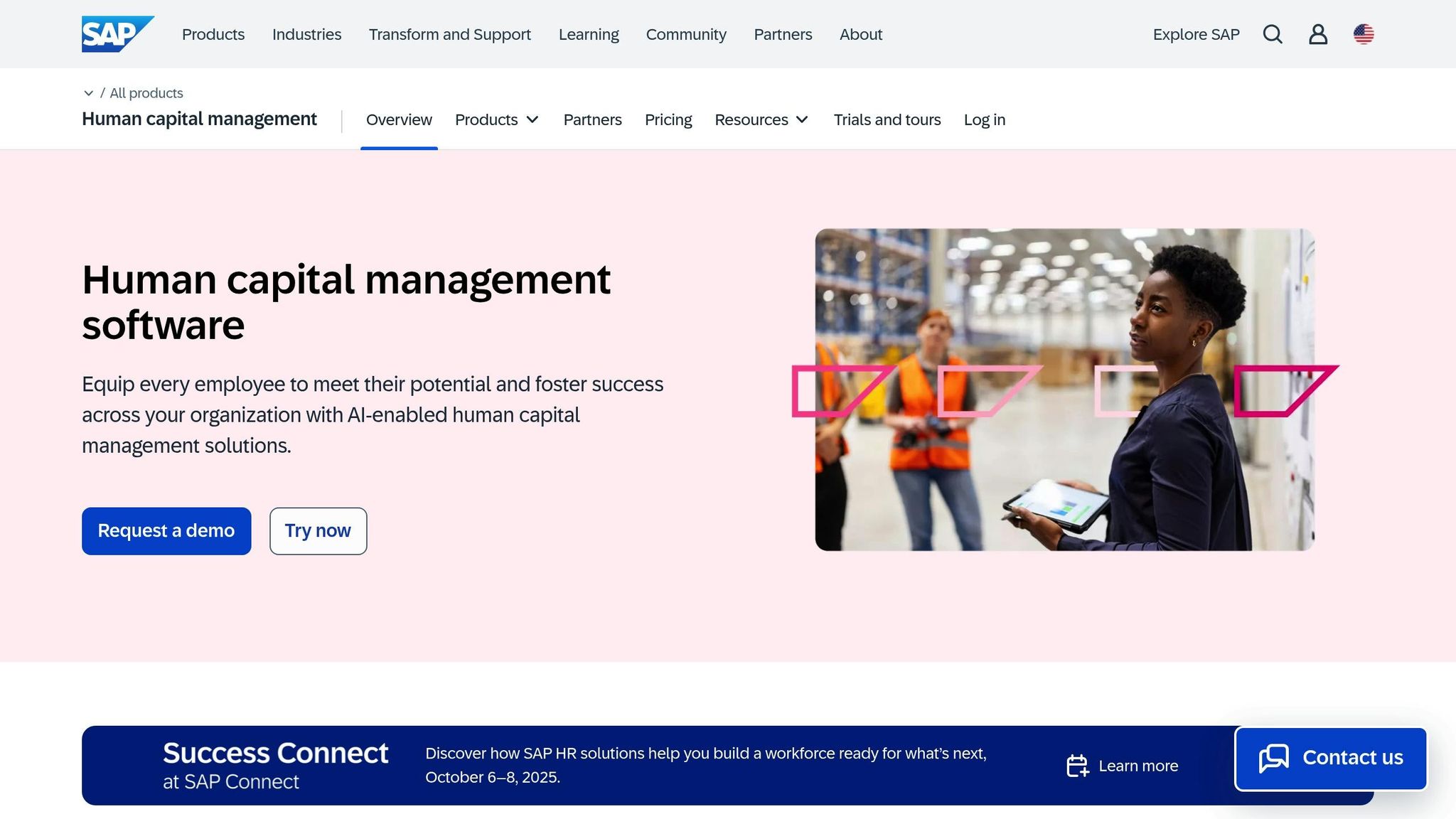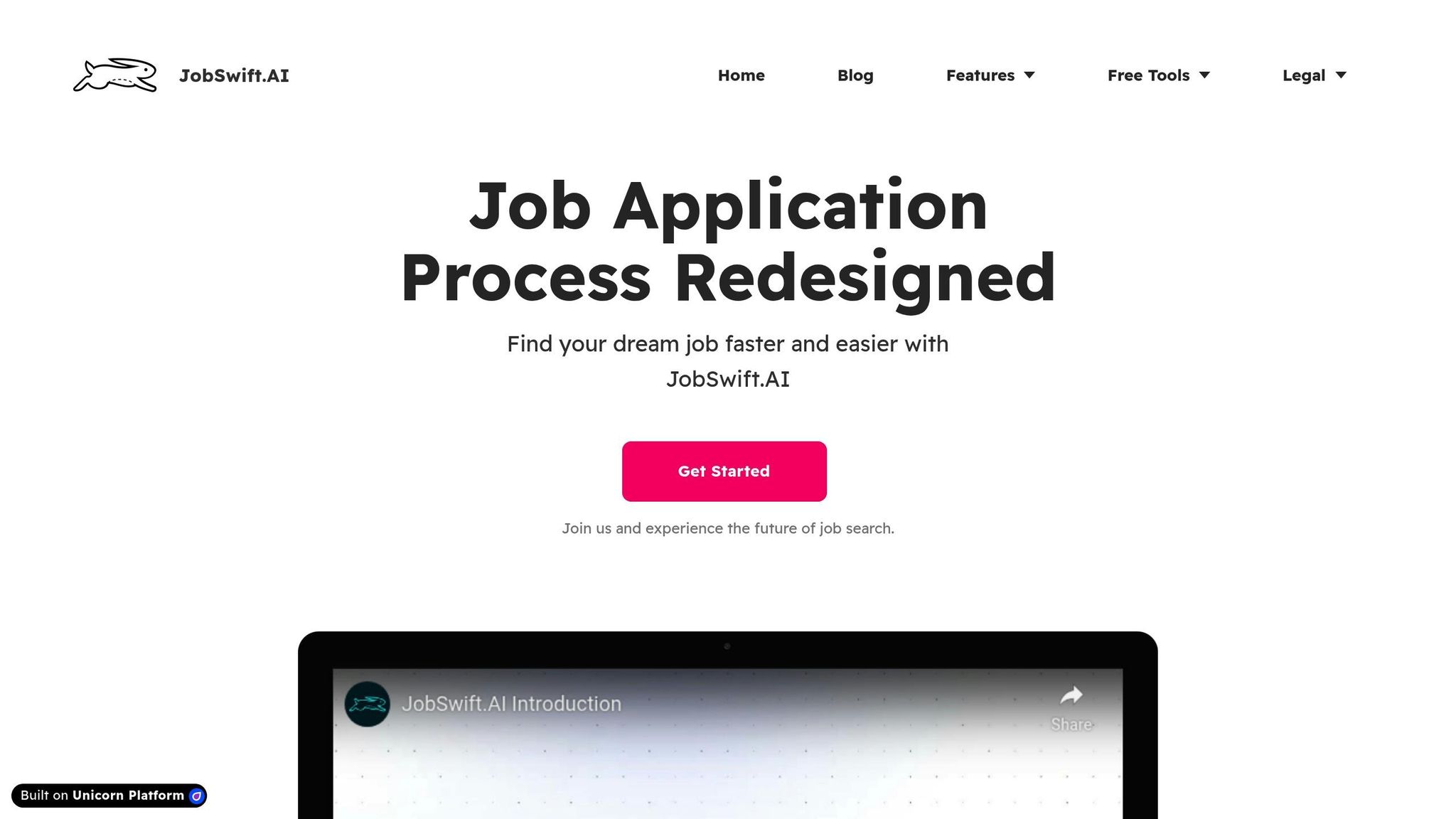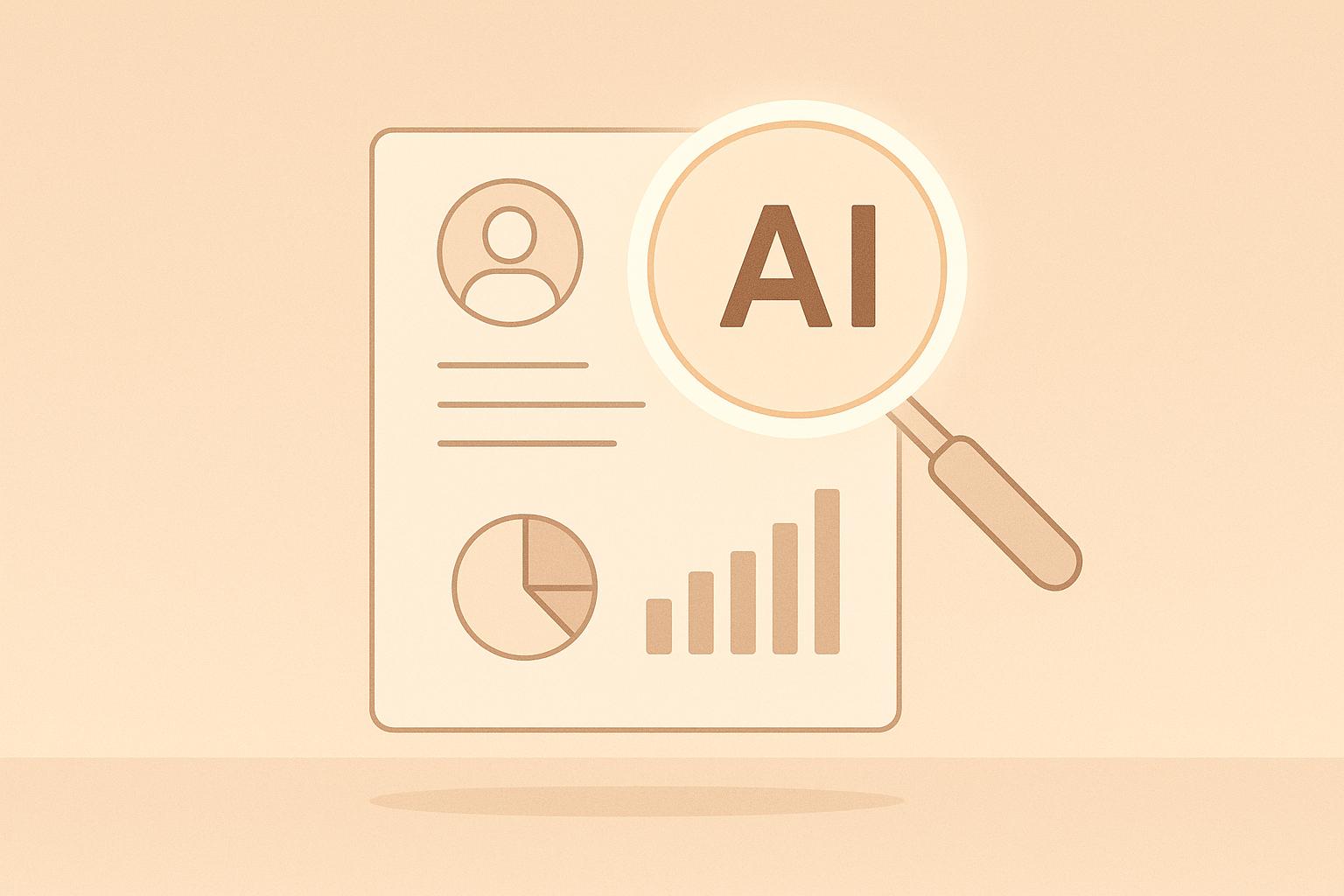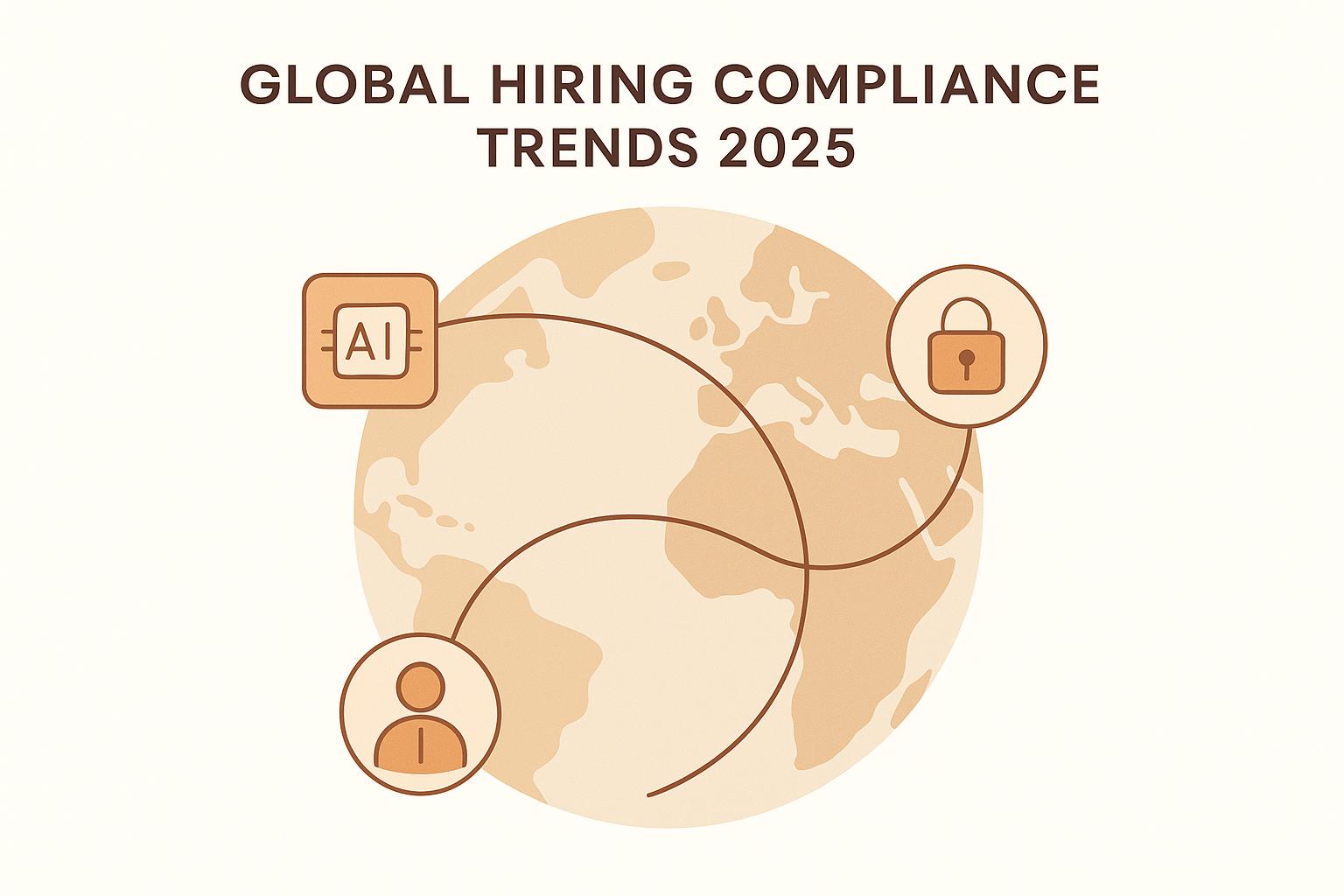The hiring process is evolving, and outdated systems no longer meet today’s demands. Enter context-aware profiling - a smarter way to match candidates with jobs. Unlike traditional systems that rely on rigid keyword matching, context-aware profiling uses AI to analyze skills, experiences, and job requirements in depth. This approach ensures better matches by understanding the relationships between skills and how they apply to specific roles.
Here’s what makes it different:
- AI-driven analysis: Tools like Natural Language Processing (NLP) and advanced models (e.g., BERT) evaluate resumes beyond keywords, interpreting context and transferable skills.
- Improved accuracy: These systems achieve up to 94% accuracy in matching candidates to roles.
- Faster hiring: Employers report a 25% reduction in time-to-fill positions and up to 90% less time spent on screening.
- Diversity benefits: By reducing bias, these systems help achieve 30% more diverse hires.
For job seekers, platforms like JobSwift.AI provide tools to better align resumes with employer needs, offer tailored job suggestions, and even optimize CVs for AI systems. Recruiters, on the other hand, benefit from clearer insights into candidate compatibility, saving time and resources.
This shift isn’t just about efficiency - it’s about connecting the right people to the right opportunities while ensuring fair and transparent hiring practices.
Boost Recruitment with AI-Powered Skill Matching in SAP SuccessFactors

Core Technologies Behind Context-Aware Profiling
Context-aware profiling taps into advanced AI technologies to go beyond basic keyword matching, diving into the deeper connections between job requirements and candidate qualifications. These systems are designed to understand nuances that traditional methods often overlook.
AI Technologies Powering Context-Aware Profiling
At the heart of context-aware profiling are Large Language Models (LLMs), which excel at interpreting human language in ways that transcend simple keyword rules. When paired with Retrieval-Augmented Generation (RAG), these models gain the ability to pull in external knowledge dynamically during evaluations, making their analysis even more precise.
A significant leap in this field came in April 2025, when researchers from institutions like Imperial College London, The Chinese University of Hong Kong, and Brest Business School introduced a multi-agent LLM framework. This system broke down the complex task of resume screening into smaller, specialized components, achieving impressive results. It recorded a Pearson correlation of 0.84 and a Spearman correlation of 0.74 for ranking candidates, outperforming single LLM systems by a significant margin.
What sets this framework apart is its ability to incorporate real-time factors like industry-specific expertise, professional certifications, university rankings, and company-specific hiring needs. These elements ensure that the evaluation process remains highly relevant and tailored.
Natural Language Processing (NLP) is another critical technology in this space. NLP helps systems interpret the varied ways candidates describe their skills and experiences. For example, it can recognize that "led a team of developers" and "managed software engineering personnel" both represent leadership experience, preventing qualified candidates from being overlooked due to differences in phrasing.
These AI advancements are further enhanced by dynamic scoring frameworks, which refine the matching process to meet the unique demands of each role.
Dynamic Scoring Frameworks for Tailored Matching
Dynamic scoring frameworks take job matching to the next level by replacing static evaluation methods with adaptable scoring criteria. This ensures that every assessment aligns with the specific context of the job at hand.
One standout feature of these frameworks is their modular architecture, which offers a level of transparency that traditional black-box algorithms cannot. HR professionals can clearly see how each piece of extracted information contributes to the overall evaluation, making the process more understandable and adaptable.
Another game-changing capability is the real-time adjustment of evaluation standards. For instance, HR teams can upload job requirements directly into the system, and the scoring criteria will instantly update to reflect those needs. This flexibility ensures that the system remains aligned with what truly matters for each unique role.
How Context-Aware Profiling Improves Job Matching
Context-aware profiling takes job matching to the next level by moving past basic keyword searches and evaluating how well a candidate truly fits a specific role.
Dynamic Skills Profiling for Better Matches
Building on the principles of AI-driven scoring, dynamic profiling focuses on understanding a candidate's skills in the context of the job opening. Instead of treating skills as fixed items on a checklist, it adapts to the unique demands of roles, industries, and even company environments.
Traditional systems often rely on keyword matching. For instance, if a job posting mentions "project management" and a resume includes the same phrase, it's marked as a match. But context-aware profiling digs deeper. It evaluates how "project management" might differ between a startup and a large enterprise, or how the role's specific industry influences its requirements. This nuanced approach ensures a much closer alignment between candidates and job needs.
It also considers how skills evolve and transfer. For example, a marketing professional who has shifted from traditional advertising to digital marketing demonstrates not just technical expertise but also adaptability and growth - qualities that static systems might overlook.
Regional market knowledge is another layer of refinement. A sales professional with experience in the Northeast U.S. market may have insights and strategies that differ from someone with a background on the West Coast. Context-aware profiling captures these distinctions, tailoring matches to meet the specific demands of the role.
Measurable Results of Context-Aware Profiling
The results of adopting context-aware profiling are clear in several key areas of hiring. Organizations using these systems often report faster hiring processes and improvements in candidate quality.
By delivering a more focused pool of candidates during pre-screening, these systems reduce the time spent on hiring. This efficiency extends to quicker onboarding and better retention rates, as candidates who closely match the role’s demands are more likely to integrate smoothly and feel satisfied in their new positions.
Diversity also benefits. By recognizing non-linear career paths and transferable skills, context-aware systems ensure candidates who might be overlooked by traditional keyword-based methods are given fair consideration.
Cost savings are another advantage. With fewer interview rounds needed and lower turnover rates, companies can cut recruiting expenses while achieving stronger outcomes. These savings translate into a better return on investment for advanced profiling technologies.
Platforms like JobSwift.AI exemplify these capabilities, helping job seekers showcase their qualifications more effectively. Features such as AI-driven employer insights allow candidates to see how their skills align with specific company needs, while job scam protection ensures they are engaging with authentic opportunities.
Recruiters, on the other hand, benefit from clear, data-backed insights into why a candidate is a strong fit. This transparency supports better decision-making throughout the hiring process.
These measurable improvements set the stage for practical strategies to implement context-aware profiling, which will be explored in the next section.
sbb-itb-96bfd48
Practical Steps to Implement Context-Aware Profiling
Turning the idea of context-aware profiling into a reality requires clear, actionable steps. Here’s how job seekers and recruiters can take full advantage of this approach.
Optimizing Resumes and Profiles for Contextual Matching
For job seekers, it’s time to move beyond simply listing skills and start showing how they’ve been applied in real-world scenarios. Instead of writing something vague like "managed projects", be specific: "led a cross-functional team of 8 people through a 6-month software implementation, cutting processing time by 40%." This level of detail helps hiring systems and recruiters understand not just what you’ve done, but the context in which you excelled.
Avoid stuffing your resume with buzzwords. Instead, focus on describing the environment where you applied your skills. For example, a marketing professional should note whether they worked in B2B or B2C settings, the size of the budgets they managed, and the industries they served. This paints a clearer picture of your expertise and how it fits into specific roles.
Quantify your achievements whenever possible. Context-aware systems thrive on concrete data. Instead of saying "improved customer satisfaction", try "increased customer satisfaction scores from 3.2 to 4.1 out of 5 over 18 months by introducing a new feedback system." These measurable results make your contributions stand out.
If you’re pivoting to a new industry, highlight transferable skills in context. For instance, a teacher transitioning to corporate training could emphasize their experience with curriculum design, adult learning strategies, and performance evaluation rather than just stating “teaching experience.”
Use industry-specific terminology carefully. While it’s important to show familiarity with your field, avoid excessive jargon that could confuse automated systems. Be clear about your role and responsibilities within your industry. For example, a "project manager" in construction has a very different focus compared to one in software development, so make those distinctions clear.
Leveraging Platforms Like JobSwift.AI

Job seekers can also benefit from platforms like JobSwift.AI, which are specifically built to work with context-aware matching systems. These tools provide features that make it easier to align your profile with the needs of potential employers.
The AI employer insights feature helps you understand what specific companies value beyond the job description. This allows you to tailor your application to highlight the parts of your experience that align with the company’s goals and culture. It’s a smarter way to apply, focusing on quality over quantity.
Another helpful tool is automatic job application tracking. As the platform learns from your application history and outcomes, it refines its recommendations to suggest roles that are a better fit. This feature can save time and improve your chances of landing interviews.
JobSwift.AI is also rolling out an AI CV optimization feature that goes beyond basic keyword matching. It ensures your resume is structured in a way that context-aware systems can easily interpret, improving your chances of finding relevant opportunities.
The platform offers a free plan with one application per day and a Pro plan for $39.99/month (or $249.99 annually), allowing up to 300 applications monthly. This encourages a targeted approach to job applications rather than a scattershot strategy.
Customizing Job Postings for Recruiters
Recruiters also play a key role in making context-aware profiling effective. To get the most accurate matches, job postings need to go beyond generic descriptions and provide a clear picture of the role and workplace.
Describe the work environment. For example, instead of saying "dynamic company", specify: "early-stage startup where you’ll collaborate directly with founders and help shape processes as we scale from 20 to 50 employees." This appeals to candidates who thrive in fast-paced, evolving settings.
Clarify autonomy and structure. Some candidates prefer clear guidelines, while others excel with minimal supervision. Be upfront about whether the role involves "following established procedures with quarterly check-ins" or "defining your own approach with weekly collaboration sessions."
Detail team dynamics. Replace vague phrases like "works well with others" with specifics: "collaborates with remote team members across three time zones using Slack and weekly video calls" or "leads in-person brainstorming sessions with cross-functional teams."
Be precise about technical skills. For example, instead of saying "proficient in Excel", specify: "advanced Excel skills for financial modeling with datasets exceeding 10,000 rows" or "basic Excel for reporting and data visualization."
Set clear growth expectations. Context-aware systems can match candidates based on career progression. Indicate whether you’re looking for someone to "master the current role over the next 2-3 years" or "grow into a leadership position within 18 months."
Address remote work expectations. With hybrid and remote work becoming the norm, be specific: "fully remote with quarterly in-person meetings" attracts a different group than "remote-friendly but requires 2-3 office days per week for collaboration."
Benefits for Job Seekers and Employers
Context-aware profiling is reshaping job matching for both individuals and companies. By addressing persistent challenges and offering new possibilities, this technology is transforming how talent connects with opportunity.
Advantages for Job Seekers
For job seekers, context-aware profiling delivers tangible benefits:
- Better match quality: Instead of wading through endless irrelevant job postings, these systems zero in on roles that align with your skills and career goals. For instance, a software developer with expertise in healthcare applications won’t waste time on generic coding jobs that don’t fit their niche.
- Quicker responses: With accurate profiling, job seekers often see faster feedback, including interview invites within days.
- Fairer evaluations: By considering the broader context of your experience, these systems provide a more balanced assessment. For example, a marketing professional who thrived in small business settings gets credit for their adaptability and resourcefulness, even when competing with candidates from larger firms.
- Streamlined applications: Targeted job suggestions reduce the frustration of applying to countless positions, leading to higher interview rates and less burnout.
- Stronger salary negotiations: By highlighting your unique mix of skills and experience, these systems help you better articulate your value, leading to more informed and confident discussions about compensation.
Platforms like JobSwift.AI amplify these advantages with tools like AI-driven employer insights, which reveal what companies prioritize beyond the job description. Over time, features like automatic application tracking refine suggestions, making the job search even more effective.
Advantages for Employers
Employers also gain significant benefits from context-aware profiling:
- Faster hiring processes: Filtering candidates based on true compatibility, rather than surface-level qualifications, saves time by narrowing the pool to those who are genuinely suited for the role.
- Higher-quality candidates: By factoring in work preferences, career stage, and even workplace dynamics, these systems deliver applicants who are a better fit. For instance, startups can attract candidates comfortable with fast-paced, less-structured environments.
- Improved retention: When employees are well-matched to both the role and company culture, they’re more likely to stay, reducing turnover and associated costs.
- Enhanced diversity and inclusion: By focusing on relevant skills and potential rather than traditional markers, these systems ensure fair consideration for candidates with non-linear career paths or transferable skills.
- Efficient use of resources: With fewer irrelevant applications to sift through, HR teams can focus on building relationships and strategic planning instead of administrative tasks.
- Smarter workforce planning: Access to clearer data about talent pools allows for better decisions on hiring timelines, skill development, and compensation strategies.
Beyond operational improvements, these systems also play a role in ensuring compliance with legal standards.
Legal Considerations in the U.S.
Context-aware profiling doesn’t just improve hiring outcomes - it also helps navigate the complex legal landscape of employment practices.
- Equal Employment Opportunity compliance: By focusing on job-relevant factors, these systems reduce the risk of unconscious bias. However, employers must ensure algorithms don’t unintentionally discriminate against protected groups.
- Data privacy: State laws like the California Consumer Privacy Act require careful handling of candidate information. Since these systems gather detailed data, robust privacy protections and clear communication about data use are essential.
- Algorithmic transparency: With states like New York requiring bias audits for AI hiring tools (e.g., Local Law 144), employers need to disclose when AI is used in decision-making and ensure these tools meet fairness standards.
- Record-keeping: Federal regulations mandate detailed documentation of hiring processes. Context-aware systems simplify this by automatically recording decision factors, ensuring consistency and fairness.
- Reasonable accommodations: Under the Americans with Disabilities Act, employers must ensure these systems identify rather than exclude candidates who may need accommodations.
- Pay equity: While these systems can highlight skills to justify fair pay, employers must avoid perpetuating historical pay gaps or relying on prohibited factors like prior salary history.
Staying compliant requires regular audits, human oversight in decision-making, and a commitment to using context-aware profiling as a tool to enhance - not replace - ethical hiring practices that respect candidate rights and promote fairness.
Conclusion
Context-aware profiling is changing the game in job matching by looking at candidates as a whole, rather than just scanning for keywords. This approach tackles long-standing recruitment challenges by analyzing the broader compatibility between candidates and roles.
The benefits are clear. Job seekers land roles that align with their skills and career goals, while employers find employees who not only meet the technical requirements but also align with their company culture and work environment. This leads to quicker hiring, better employee retention, and smarter resource allocation for everyone involved. On top of that, these systems help ensure compliance with privacy laws and anti-bias regulations, addressing important legal concerns.
Platforms like JobSwift.AI bring these advantages to life, offering tools like AI-driven employer insights and automatic application tracking. Whether you're stepping into the job market for the first time or considering a career shift, this technology can connect you with opportunities that truly reflect your capabilities and aspirations.
The future of recruitment is already here. With dynamic profiling and a focus on transparency, context-aware matching is shaping a new era in hiring. For job seekers and employers alike, this technology offers a powerful edge in today’s competitive landscape.
FAQs
How does context-aware profiling help reduce bias and promote diversity in hiring?
Context-aware profiling helps tackle bias in hiring by establishing a consistent and structured way to evaluate candidates. This approach limits the impact of unconscious biases - like those tied to names or physical appearances - ensuring a more impartial review of a candidate's skills and qualifications.
By valuing a wider array of experiences, soft skills, and diverse credentials, this method supports fairer job placements. The outcome? A hiring process that encourages inclusivity and builds a more diverse workforce, which is a win for both companies and job seekers.
How can job seekers tailor their resumes for context-aware profiling systems?
To make your resume stand out to context-aware profiling systems, incorporate keywords and phrases from the job description naturally into your Skills and Experience sections. Stick to a clean and straightforward format with standard headers like Experience, Skills, and Education. Avoid using intricate designs or graphics, as they can confuse AI systems scanning your resume.
It's also smart to adjust your job titles and descriptions to better match the role you're targeting. Regularly updating your resume to reflect the exact language and requirements of each job posting can significantly boost your chances of being matched with the right opportunities.
How does context-aware profiling improve job matching compared to traditional methods?
Context-aware profiling takes job matching to the next level by using dynamic scoring systems that adjust based on real-time data and shifting circumstances. Unlike the static nature of traditional methods, which stick to fixed criteria, this approach evaluates candidates through a lens that considers evolving factors like their skills, experience, and even behavioral patterns.
By factoring in context, these systems offer assessments that are not only more precise but also fairer. The result? Stronger matches, a more efficient hiring process, and a better experience for both employers and job seekers.


